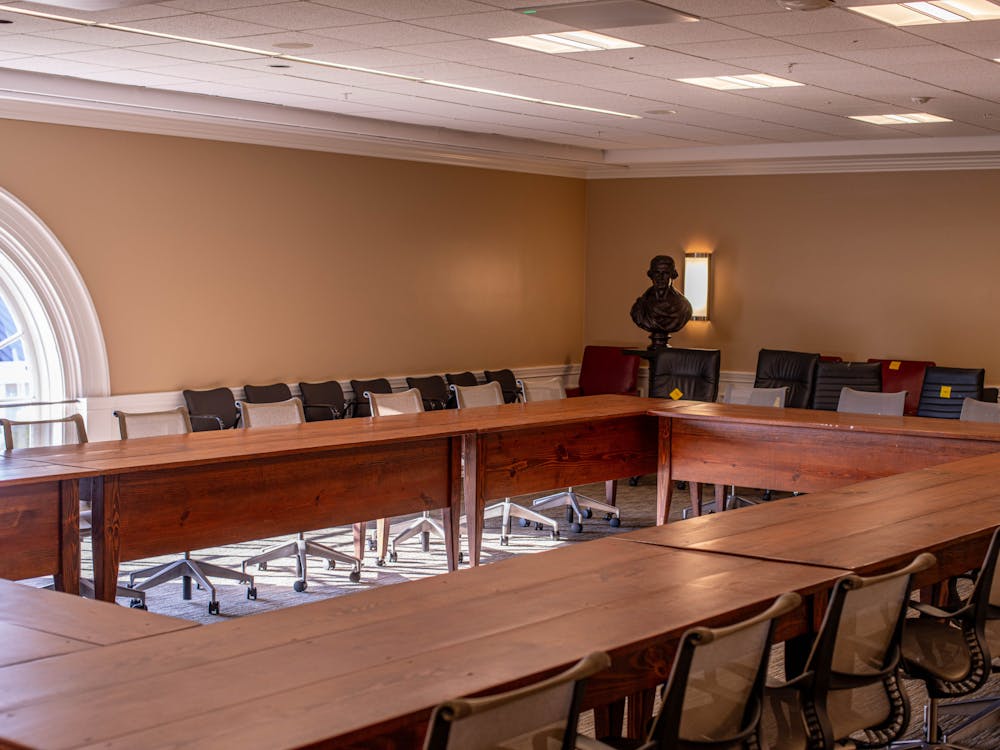In the wake of proposed Congressional legislation that would penalize schools for tuition increases which outpace inflation, new College Board reports show the average tuition increase at public universities for 2003-2004 was the highest in the 27 years statistics have been kept.
This year, the weighted average tuition and fees at four-year public institutions was $4,694, up from $4,155 last year, a 13 percent increase according to two reports released Tuesday, Trends in College Pricing 2003 and Trends in Student Aid 2003. The average figure was much higher at four-year private colleges and universities, $19,710, a 6 percent increase from $18,596 a year before.
Many factors, including an economic downturn, rising health care, technology and utility costs, and a lack of public funding have been cited as possible explanations for the jump in tuition.
"These increases are due to a complex array of factors," American Council on Education President David Ward said in a statement. "No amount of effort by our institutions ... will be able to preserve low-tuition formulas."
This year's increases are part of an ongoing trend in rising college costs which prompted California Rep. Howard P. "Buck" McKeon to introduce on Oct. 16 the Affordability in Higher Education Act, legislation that would cut federal grants and programs, but not financial aid, at colleges that increased tuition at more than twice the rate of the Consumer Price Index for six years in a row.
Other measures in the bill would provide potential students and families with easier access to information about the cost of college and encourage institutions to accept transfer credit.
Kathleen Little, executive director of financial aid for the College Board, said the bill raised an important issue and included valuable provisions, but potential sanctions could harm students at affected universities.
"Having the government trying to control tuition and public fees is not a good idea," she said.
Despite record increases, tuition levels remain significantly less than the actual cost of education, with states contributing approximately $64 billion last year to public colleges and universities. Similarly, tuition at private schools is often subsidized by private philanthropic donations.
"It costs more for an institution to educate a student than what the student actually pays," said Damon Manetta, manager of external affairs for the National Association of College and University Business Officers, which represents chief financial officers from over 2,100 institutions.
College Board Spokesperson Jennifer Topiel said data in the reports demonstrated an "inverse relationship" between state funding for public universities and tuition increases.
"When state appropriations decreased, tuition increased," she said. "The tuition increase has been a lot higher than normal, but if you look at what students are actually paying, it's not that much of an increase."
Even minor increases can be problematic for underprivileged students, however. Statistics showed that even after correction to account for academic achievement, low-income students are far less likely than their high-income counterparts to enroll in college, suggesting significant financial barriers in higher education, Little said.
"There is not enough financial aid available for the full need of lower-income students," she said.
Last year, aid to undergraduate and graduate students increased by 12 percent, to over $105 billion, the majority of which was provided by federal funding, approximately $70 billion, followed by institutional grants, $20 billion, state programs, $5 billion, and private sources at $7 billion.
According to demographic information, Caucasian high school graduates were found to pursue post-secondary education at much higher rates than African-American or Hispanic students with a high school diploma, a finding which Little said was troubling.
"There probably are some cultural factors when families aren't encouraging students to pursue higher education," she said.
At the same time, the reported long-term benefits of a college degree are staggering, Topiel said. Relative to each demographic group, full-time workers with bachelor's degrees earn approximately 60 percent more than comparable workers with only a high school diploma. For an average college graduate, this amounts to over $1 million dollars in additional income over a lifetime.
"We think that it's important for students and families to focus on the value of education," she said. "We don't want them to be scared off by this because there are ways to pay for higher education."






